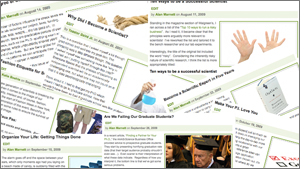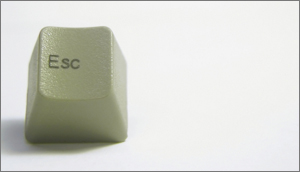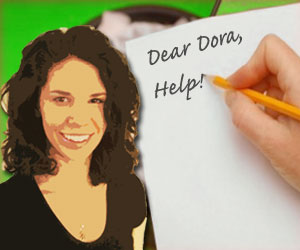 If Ron Popeil (of “Set it and Forget it” fame) had been a scientist, he probably would have been preaching this years ago. Ron knows that in order for something to stick in our heads, it has to be easy to remember. Training your autopilot is a saying that while easy to remember, can be difficult to execute…
If Ron Popeil (of “Set it and Forget it” fame) had been a scientist, he probably would have been preaching this years ago. Ron knows that in order for something to stick in our heads, it has to be easy to remember. Training your autopilot is a saying that while easy to remember, can be difficult to execute…
Flyceum: Your Science. Your Career.
We’re following in the tradition of open discussions among scientists that has resulted in important advances in both science and society.
Training Your Autopilot: When in Doubt, Throw it Out
by
100 Articles and Counting!
by
Calculating How to Split Cells
by
When I first started cell culture, I was just maintaining a line of HEK cells so it was pretty much meat and potatoes cell splitting. I thought I had it all under control. Then I tried a 1:8 split into a 24-well dish…
Know When to Fold ’em (for the day)
by
Make Your P.I. Love You
by
 Success in science can depend just as much on managing our boss as it does on managing our project. Aside from making the day-to-day more enjoyable, a good working relationship with our boss is the first step towards a great recommendation. Since a reference letter can singlehandedly get an average application considered or a great application thrown out, it’s worth the effort to get one. So where do we begin?
Success in science can depend just as much on managing our boss as it does on managing our project. Aside from making the day-to-day more enjoyable, a good working relationship with our boss is the first step towards a great recommendation. Since a reference letter can singlehandedly get an average application considered or a great application thrown out, it’s worth the effort to get one. So where do we begin?
PCR Tube Strip Labeling Tip
by
The very first things I ordered when I officially joined my lab were multi-colored Sharpies and a rainbow of lab tape. The color gives me a little bit of joy in a world of black, white, grey, and beige. Yes, I am the kind of person who wants tube racks in every different color. Yes, I am the kind of person who gets excited to use multicolored eppis. Yes, I am the kind of person who enjoys adding NaOH to phenol red solutions just to watch the yellow contrast with the bright pink.
Training Your Autopilot: Assay Pipetting
by
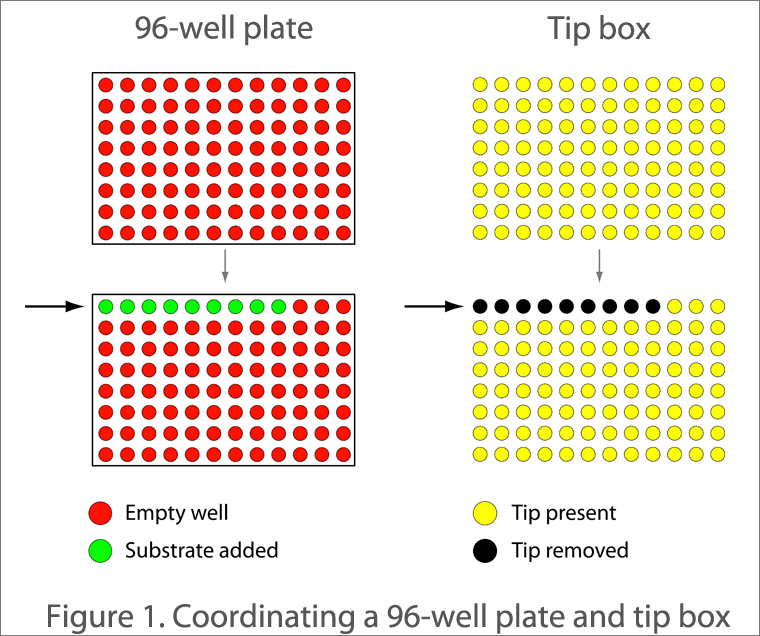 Recently, we introduced a series called Training Your Autopilot: Mastering Mindless Tasks dedicated to improving laboratory techniques by standardizing the processes of performing experiments. Routine assays can be about as engaging as watching paint dry, but it doesn’t mean we should be careless or sloppy – quite the opposite. So in this installment, we build upon our previous tip and show how to integrate it into our assays.
Recently, we introduced a series called Training Your Autopilot: Mastering Mindless Tasks dedicated to improving laboratory techniques by standardizing the processes of performing experiments. Routine assays can be about as engaging as watching paint dry, but it doesn’t mean we should be careless or sloppy – quite the opposite. So in this installment, we build upon our previous tip and show how to integrate it into our assays.
How to Weigh Small Amounts
by
Weighing out small amounts is always nerve-racking. Between a shaky hand, an unwelcomed breeze or a scale full of static, there are plenty of ways for your precious few milligrams of material to vaporize into thin air. As a result, it is often tempting to get the solid into the “safer” heavier flask where at least it will be protected. However, this is not always the best idea.
Five Ways Scientists Waste Time
by
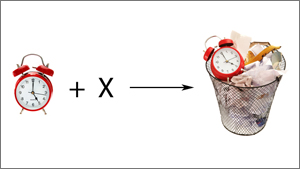 Notice the title is not “The only 5 ways scientists waste time…” Labs can be filled with a million distractions, and these days most of them reside on the internet. But we’re not talking about killing two hours on Hot or Not. We’re talking about how we waste time when we don’t know we’re wasting time. Those are the killers. And these days, with funding tight and postdocs seeming to stretch into oblivion, wasting time can have serious consequences.
Notice the title is not “The only 5 ways scientists waste time…” Labs can be filled with a million distractions, and these days most of them reside on the internet. But we’re not talking about killing two hours on Hot or Not. We’re talking about how we waste time when we don’t know we’re wasting time. Those are the killers. And these days, with funding tight and postdocs seeming to stretch into oblivion, wasting time can have serious consequences.
Stealing Projects, Surviving Gross Experiments and Deceit
by

